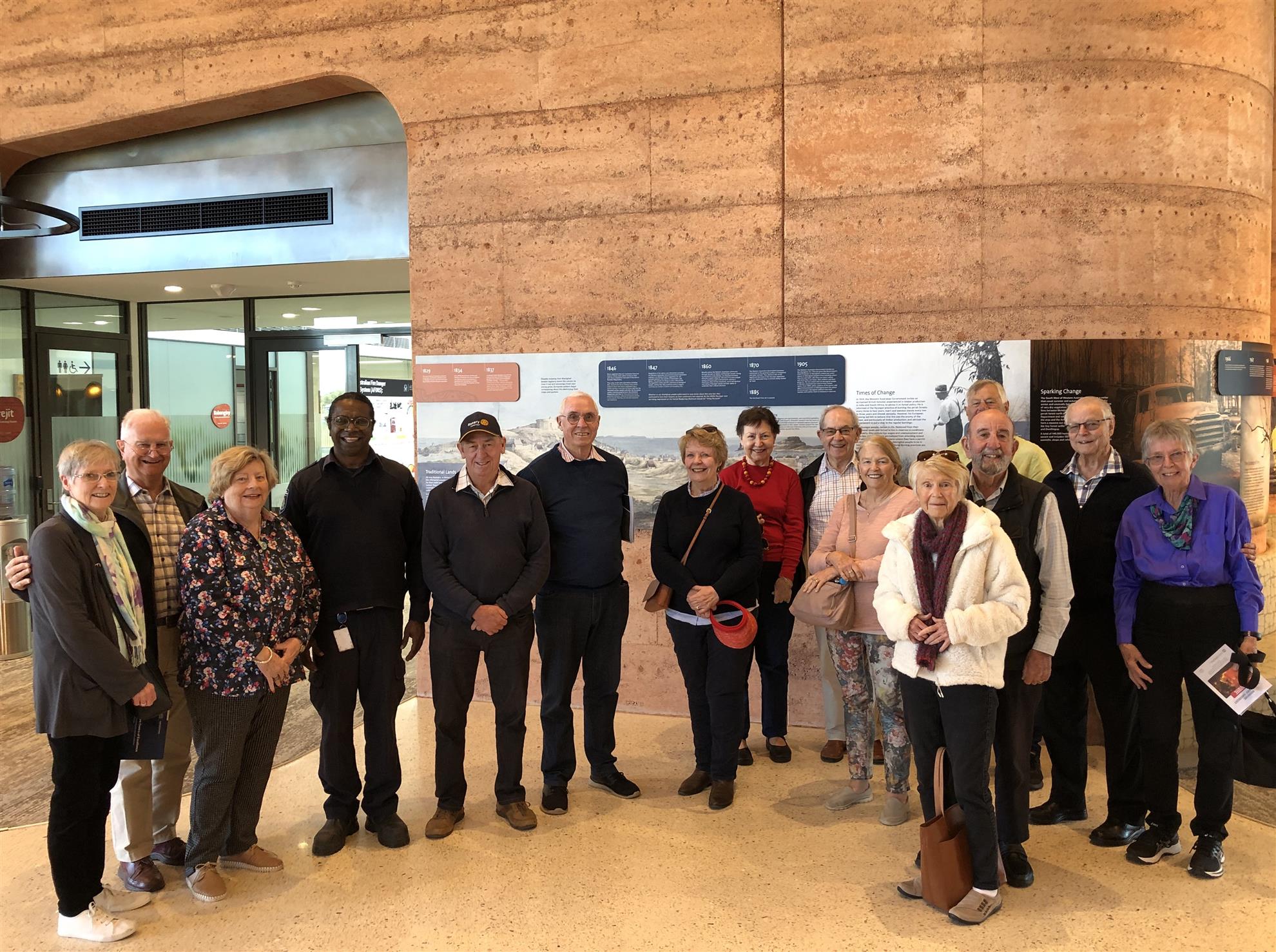

 We had a most enjoyable outing to the DFES Bushfire Centre of Excellence at Nambeelup in place of our usual meeting, and nine Members, one Honorary Member and six wives were able to attend. We were hosted by a Walmajarri man – Clifton Bieundurry – who explained that there are six seasons in the Aboriginal calendar, and nature provides triggers for various activities such as moths heralding a salmon run or little white flowers indicating where underground water may be found in the desert. Fire has been used for centuries by the Aboriginal people to manage the land and to facilitate survival, and Clifton told us about the ‘cool burning’ technique which is used to regenerate the land. Small patches of land are subjected to fire clearing when the undergrowth is semi-dry, and thus the flames are kept low and intense heat is avoided. This technique enables wildlife to take refuge in an adjoining patch, whilst at the same time the fire cracks open seeds for plant regrowth which will attract birds and animals in the future. Whilst lightning continues to trigger unscheduled fires, in modern times there is a tendency for large build-ups of fuel to occur due to a lack of controlled burns, and DFES is co-operating with many groups in order to get traditional fire burning systems accepted as the norm. By doing this there will be far less damage to local flora and fauna, but it does require patience and dedication. The goal should be achieved in about two generations, so perseverance is also needed. The building and gardens at the Centre are very impressive indeed, and after all was said and done, we repaired to the Ravenswood Tavern for a lovely lunch beside the Murray River. Bliss!
We had a most enjoyable outing to the DFES Bushfire Centre of Excellence at Nambeelup in place of our usual meeting, and nine Members, one Honorary Member and six wives were able to attend. We were hosted by a Walmajarri man – Clifton Bieundurry – who explained that there are six seasons in the Aboriginal calendar, and nature provides triggers for various activities such as moths heralding a salmon run or little white flowers indicating where underground water may be found in the desert. Fire has been used for centuries by the Aboriginal people to manage the land and to facilitate survival, and Clifton told us about the ‘cool burning’ technique which is used to regenerate the land. Small patches of land are subjected to fire clearing when the undergrowth is semi-dry, and thus the flames are kept low and intense heat is avoided. This technique enables wildlife to take refuge in an adjoining patch, whilst at the same time the fire cracks open seeds for plant regrowth which will attract birds and animals in the future. Whilst lightning continues to trigger unscheduled fires, in modern times there is a tendency for large build-ups of fuel to occur due to a lack of controlled burns, and DFES is co-operating with many groups in order to get traditional fire burning systems accepted as the norm. By doing this there will be far less damage to local flora and fauna, but it does require patience and dedication. The goal should be achieved in about two generations, so perseverance is also needed. The building and gardens at the Centre are very impressive indeed, and after all was said and done, we repaired to the Ravenswood Tavern for a lovely lunch beside the Murray River. Bliss!